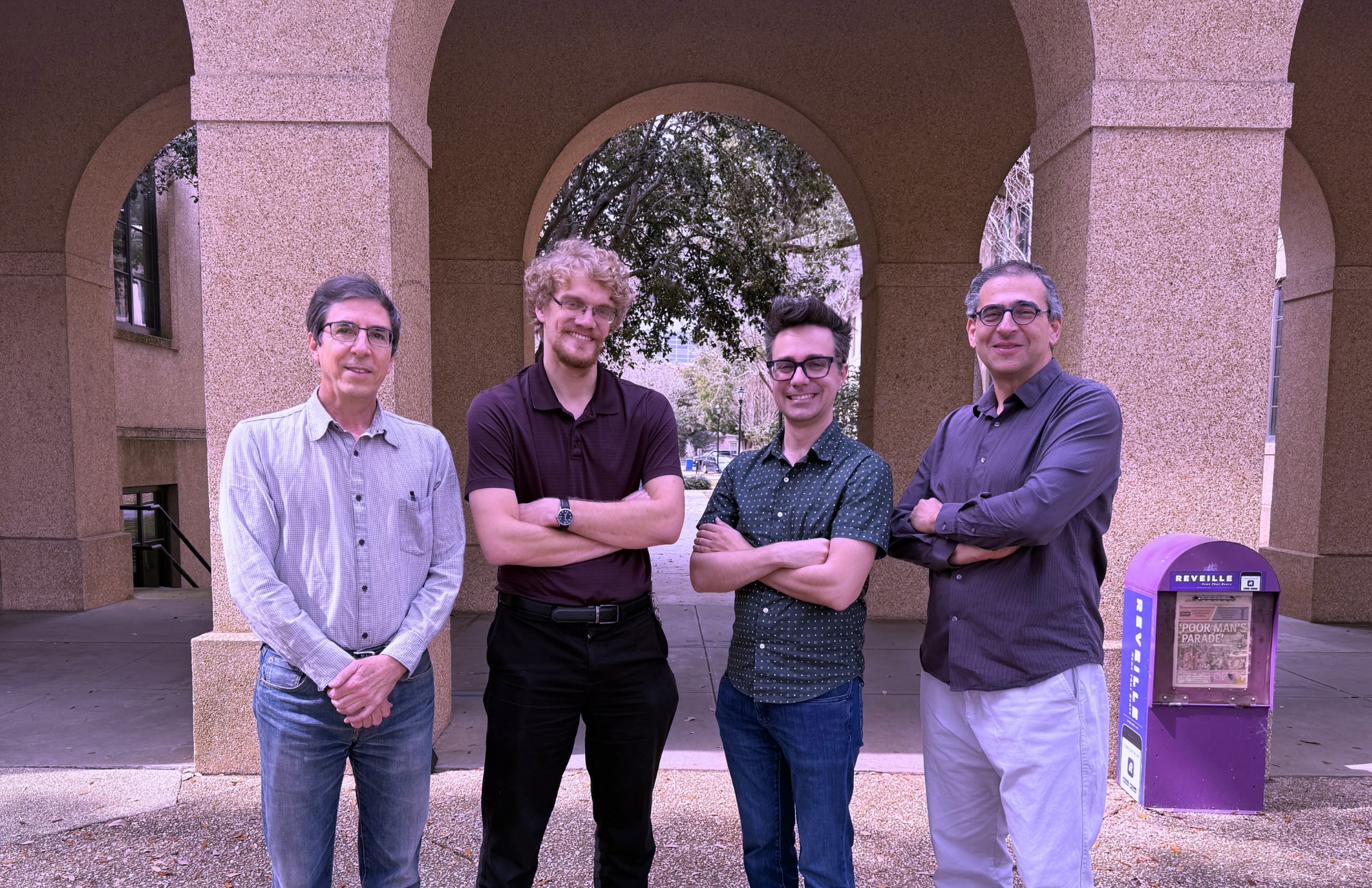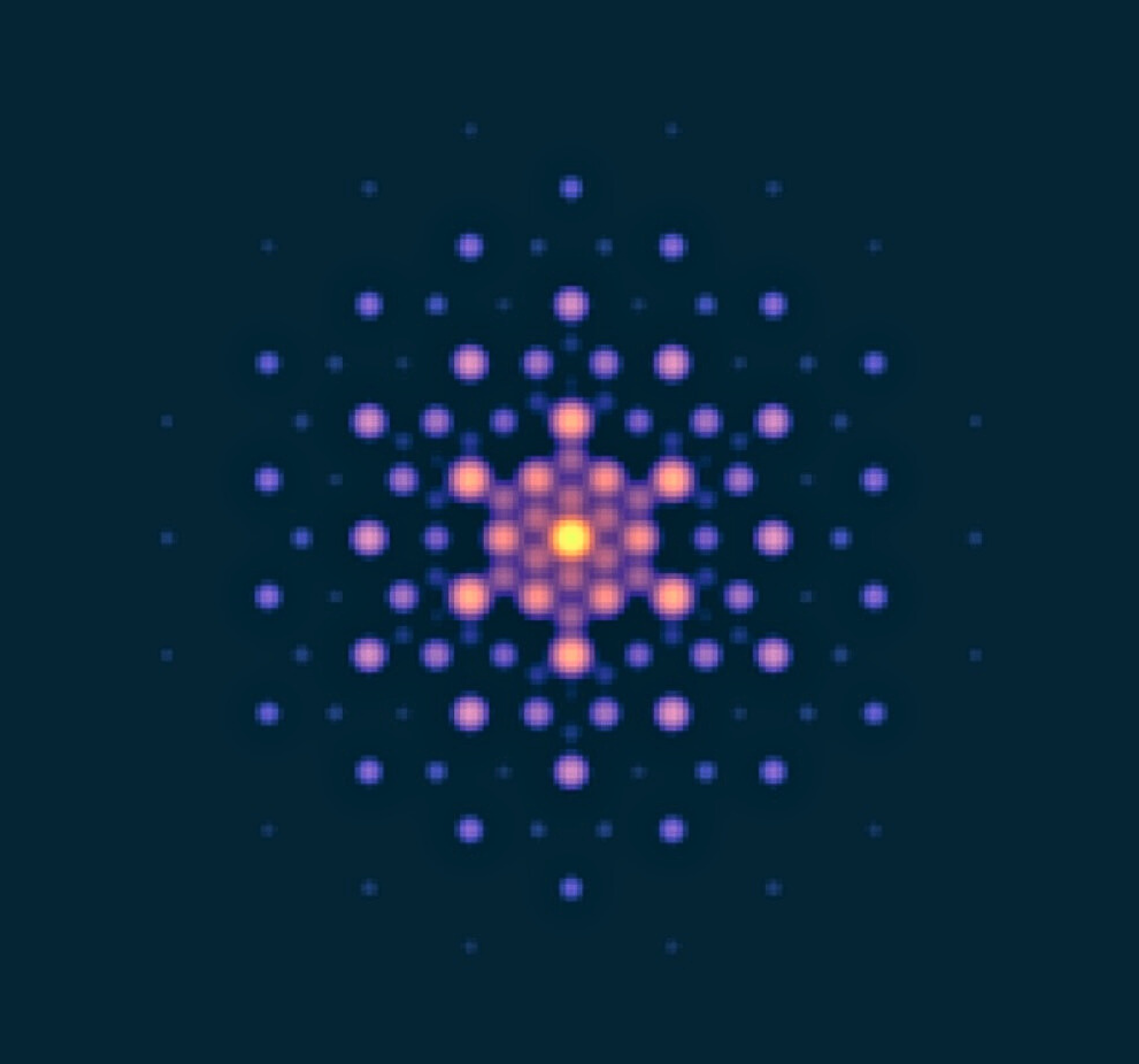LSU Researchers Discover a New Way to Trap Electrons for Control of Quantum Matter
February 27, 2025

LSU Department of Mathematics professors Stephen Shipman and Daniel Massatt, along with LSU Department of Physics & Astronomy professors Justin Wilson and Ilya Vekhter, teamed up to discover a new way to trap electrons in materials, advancing quantum matter research.
Quantum computing relies on precise electron control, but strict material requirements make this challenging. Scientists have long struggled to confine electrons to tiny pockets that can be efficiently manipulated. Still, quantum particles are prone to seeking partners at the same energy and eloping together. An LSU research team has found a new approach: by introducing subtle disruptions, they can create these trapped electron islands without rigid structural rules. This breakthrough could unlock new possibilities for quantum computing and other advanced technologies.
The interdisciplinary team—comprising LSU Department of Mathematics professors Daniel Massatt and Stephen Shipman and LSU Department of Physics & Astronomy professors Ilya Vekhter and Justin Wilson—combined expertise in material science, condensed matter, and mathematics to tackle this problem. By working together, they made progress beyond traditional material constraints.
Electrons typically move smoothly through solid materials with perfectly arranged atoms, like water flowing in a clear river. However, when imperfections—such as missing or extra atoms—are introduced, they can disrupt the flow. Under exceptional circumstances, these disturbances can form whirlpools where some water gets trapped instead of just creating small ripples. Similarly, these trapped electron states in electronic systems are known as Bound States in the Continuum (BICs).
Traditionally, BICs could only form in materials with highly symmetrical structures, limiting their application. The LSU researchers found that hidden mathematical properties in layered materials can also create these trapped electron states. As a result, BICs can be designed in a broader range of materials than previously thought, allowing greater control over where these states exist in energy and space—a crucial factor for quantum technologies.
“We discovered that BICs may be designed using a much less apparent algebraic structure of the mathematical models describing electrons in layered materials, specifically by placing impurities precisely,” said Shipman.

Representation of Bound States in the Continuum (BICs) as a central bright spot surrounded by a sea of electrons.
The team studied AB-stacked bilayer graphene, a well-known material of two ultra-thin carbon layers in a honeycomb structure. They discovered that BICs can be formed by strategically placing imperfections on two stacked carbon atoms. This discovery shows fine-tuned defects can manipulate electronic properties without needing globally perfect structures.
“We started with graphene since it has exciting potential for wide applications yet is simple enough to describe. However, the power of the method we developed is that it can be applied to many of the most exciting materials people study today, from exotic superconductors to topological matter. We are only at the beginning of learning how to implement this new control mechanism of materials at the atomic scale,” said Vekhter.
The researchers recently published their findings in the Letters section of the Physical Review B journal. In the paper, they propose using scanning tunneling microscopy to observe these BICs directly and further explore ways to control electronic properties in two-dimensional materials. Their findings suggest that strategically introducing defects could help tailor the electronic properties of a wide range of materials, paving the way for advancements in quantum computing and other next-generation technologies.